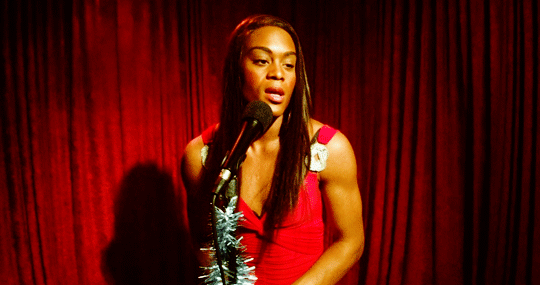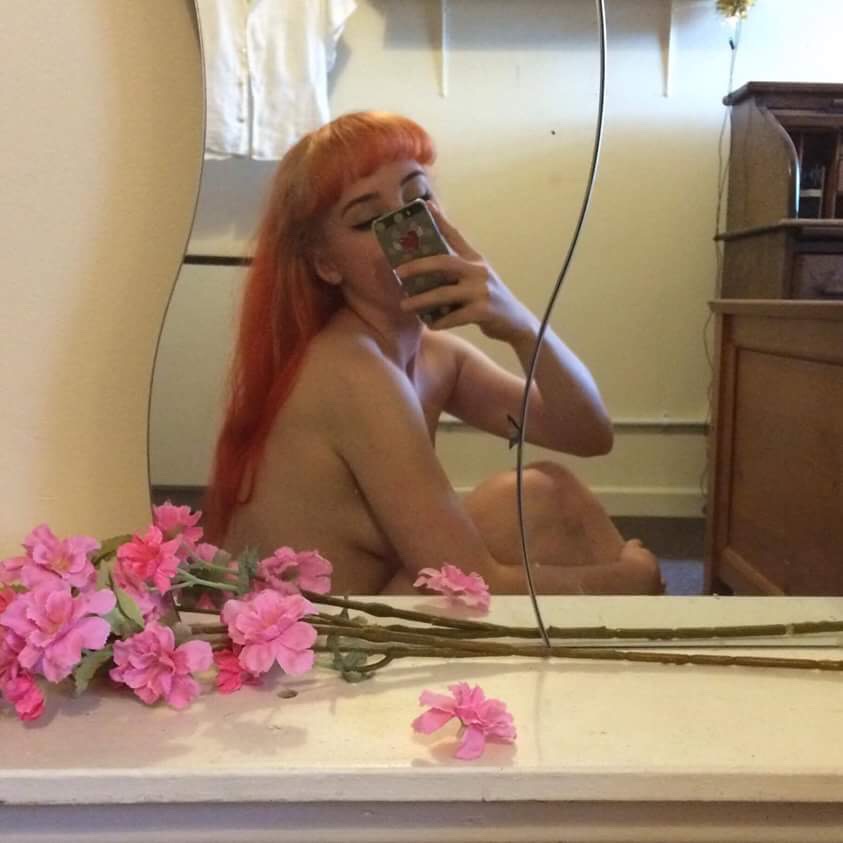Sam Lipp
Sam Lipp, a NY-based artist and co-founder of Queer Thoughts , isn’t necessarily interested in pursuing grand statements or lecturing the audience whatever up-to-date morale. Instead, his work seems to be a genuine quest for mindful questions (not their answers) that concern the self within the larger sense of society. While many of his conceptual challenges seem to divert back to the origins of existentialism, there’s a vulnerable interest in identity that moves beyond the peripheries of gender and class. Actually, beyond civilization itself. What does it mean to belong here, rightfully, is there such a thing as pureness, will bodies and their consequences ever become outmoded? When spending time with Lipp’s pieces, somehow there’s always the bodily left in the end, a physical reaction extruding softly from the work itself as much as from its audience. Suddenly we’re much more aware of our innate contact with smell and touch. At times sound seems to become part of it, too. It’s hard—at this very moment, perhaps impossible—to interpret openly the multitudinous meanings within Lipp’s work. Emanating from the artist himself, there’s a continuous resistance to being identified, and therefore categorized. Perhaps Lipp is onto something big here, an artistic process in its becoming that does not enter art’s traditional narcissism of vocalizing an inside that’s everyone’s outside, but an outside that’s everyone’s inside. The content of the work prepositions change while referencing a post-apocalypse. And I am not exactly sure why. Perhaps because I suddenly found myself somewhere else. Somewhere everything new and old still needed to be invented.
Where’s your head these days?
I recently had a show in LA at MAK Center that Alessandro Bava organized, called Apologia. I made these rainbow flags out of glittery spandex, so I’m still thinking about what that was. I used to sew as a tween, so I enjoyed returning to that. I’m always interested in the forms I made/participated in when I was a child and adolescent.
Returning to this child-self, does it have anything to do with contemplating a former self that perhaps felt less restrained in its nature?
Part of it is wanting to use materials and techniques that were taught or given to me, materials that are coded as ‘art’ or ‘craft,’ but aren’t necessarily considered good or suitable for “higher” discourses. The other part is that childhood and adolescence were for me extremely uninhibited creative times, but full of a lot of shame and hiding. So all of the aesthetic impulses I relate to that time sit in this very potent nexus of regulation and transgression.
It’s interesting how the roles may reverse. Queer children, the likely possibility of spending their childhood in hiding due to being confined by society’s fixed set of rules. Whereas heteronormative children might outlive their true(r) selves, up until adulthood is introduced, suddenly becoming aware of limitations and their implications. I think this links directly to gender, especially girlhood.
Yeah, I think the correlation to girlhood is very important, and the aesthetic implications of that experience are often underexamined or appreciated. Those concerns are particularly present in the work of Chicago-based sculptor Mindy Rose Schwartz, who has been a very influential artist to my practice and art education. She has a similar relationship to materials where she investigates and recontextualizes the techniques and processes that she learned growing up. Queer Thoughts will be presenting her first New York solo exhibition this September, and then we are also organizing a solo exhibition of her work at Balice Hertling in Paris this October.
In your most recent exhibition Do you smell Fumes? at Bodega (NY), you explore the subject of purity, and how it relates to an American-esque type of happiness. I often have trouble conceiving the idea of purity, wondering if it actually exists after we’ve been introduced into the world. I find it interesting how especially straight men seem to hold on to purity as a form of female ideal, a state of female fragility. The state of pureness seems largely gendered.
That exhibition didn’t actually have a title, although the phrase “Do you smell fumes?” was repeated multiple times in the various works. So it functioned that way for many people. The original idea was to contrast “Do you smell fumes?” (which appears on a flyer in a scene in the 1995 Todd Haynes film Safe ) with the word incest. I was obsessed for a while with the word incest and the conception (or rather construction) of incest as the ultimate taboo and precipice for human communities becoming a ‘civilization.’
As I put the show together I felt like the word incest was so heavy that it burdened the actual work. So I had to examine what was behind the motivation to play with this extreme taboo and what the act of a prohibition entails. Purity then became a stand-in for any situation where an ideal requires the exclusion of something, where something has to be cast out. So I guess having a conversation about purity wasn’t my original intention in making that work, but it became the avenue through which I could connect this other content.
I’d say purity certainly is a gendered concept. Part of my motivation to use the Safe reference was for that very reason. Obviously Todd Hayne’s and Julianne Moore are part of a gay/femme cosmology, and then there’s the AIDS subtext of the film. But I never particularly wanted to make work specifically about referencing a film, or where you have to see the film to understand the work. However, I became transfixed by this particular, rather incidental text-image “Do You Smell Fumes?” and it kept returning to me and coloring certain experiences I had. I feel like having a fixation on something that you see on a screen has a sort of ‘for the girls and the gays’ connotation. Like being transfixed on an image is more passive than gazing at the real thing. Also for me personally, I have a strong sense of smell and am very sensitive in many ways, which I feel are both feminine qualities, so the phrase “Do you smell fumes?” is like a dog whistle for “Are you sensitive? Are you picking up on the subtext? Are you a faggot?”
Was it because the overall concept of incest became too burdensome for the work itself—which, in many ways, I merely read as a mode of distraction—or was there also the public burdening of yourself when tackling with such a loaded and delicate topic like incest. I think still today, it’s somewhat impossible to freely explore hypersensitive subjects as we tend to immediately withdraw within judgement, the comfortable arms of Ignorance. It’s a shame really, many interesting things stay untouched because we are too afraid of what people might conclude about us.
I agree with you, and I hope that at one point I can resume that project. I did contemplate how an audience would react to that title, but ultimately it was the works themselves that moved away from the word. There was already too much other content that would have never been accessible with such a domineering title, which is why the ideas about purity became my workaround.
It’s also interesting how the lack of pureness necessarily refers to impureness. So either we are pure or we are impure, there’s no in-between.
Purity exists as an ideal. We’re pure only when we don’t exist.
Alongside Luis Miguel Bendaña, you manage Queer Thoughts , how and (most importantly) why did this art space come into existence?
It started because Miguel had a large, weird walk-in closet in his apartment in Chicago, so we thought it could be a gallery. I guess we had something to say, or rather a point of view to express, so we needed a venue for that. It was 5 years ago this June that we had the first show (with the artist who would later be known as Puppies Puppies). The project has largely followed an emotional intuitive trajectory.
What specific landscape/set of themes does this emotional intuitive trajectory usually pertain to?
The gallery has always operated within a very intimate space (literally and figuratively). And the artists we work with are almost always people we like. Which makes things much more interesting, and complicated! The real work that the gallery does is creating a public access point to these very personal relationships.
In the press release of in hopes of not being considered —a group show at Kate Werble you’re currently part of—I especially noticed your work’s general intentionality in this sentiment: “They present messages that can’t be easily decoded, and images that do not wish to be identified.”
I think that’s a core issue. I hate being identified. But I also named my gallery Queer Thoughts . There is rage against what is prescribed, but that is also not a desire for opacity, or to withdraw from creating meaning.
This dualism was also particularly present in the Bodega show. In a way the works were incredibly straightforward, they literally spelled out their message, “Do you smell Fumes? ... Are you allergic to the 21st century?” But then that directness was undermined by everything else in the treatment, every other sign cast a shadow of uncertainty.
Your work often seems to move in between ideologies of identity, with that also the binary fold of gender. Recently I have thought again a lot about identity, wondering if it’s actually this quest of finding out who we are, or if we are unfixed beings, constantly changing. Maybe, in some ways, we’d be better off without this fixed notion of ‘identity.’ Perhaps identity can become something much more fluid too, much like gender.
If identity could be dissolved, I think there would be an anti-identity to take its place. I’m less interested in disintegrating a category than in creating agency and opportunities for play.
Images courtesy of Sam Lipp
interview LARA KONRAD
What to read next







